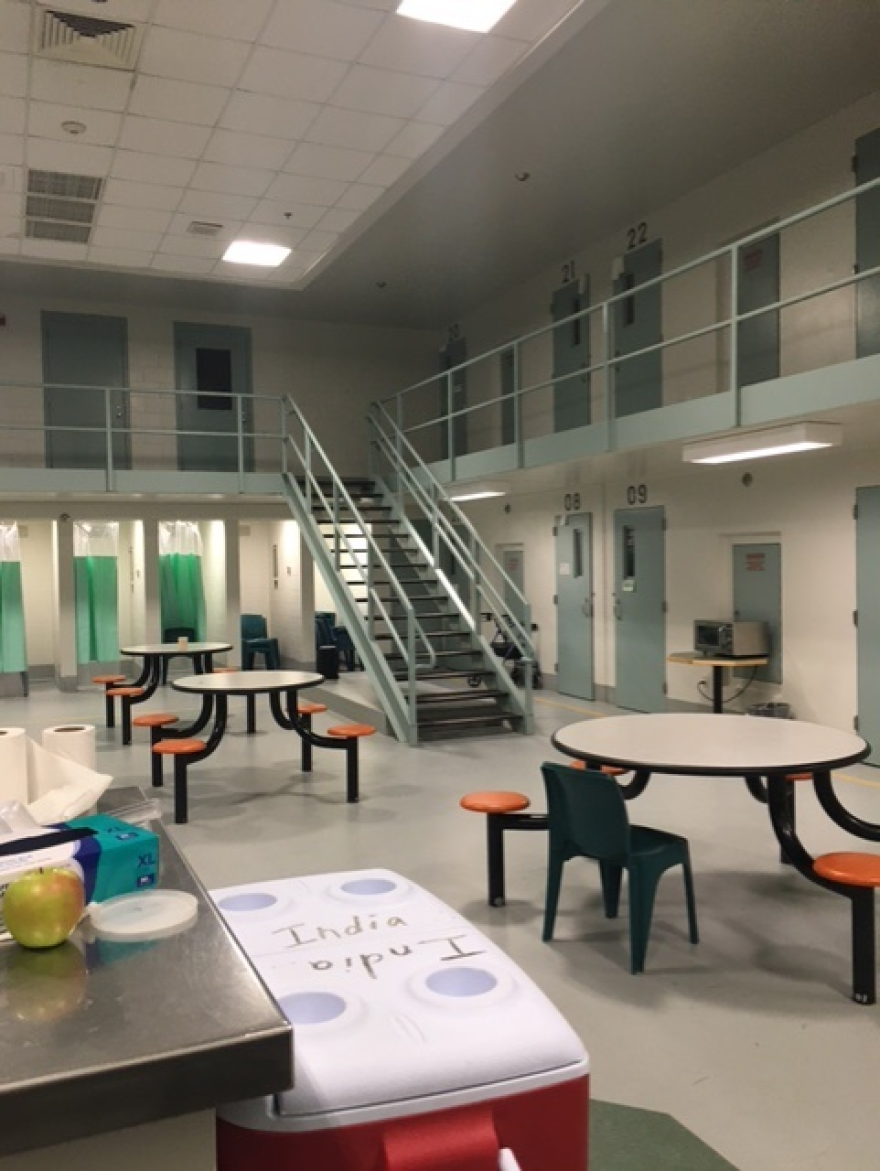Inside Southern State Correctional Facility, the living unit model looks like all the other units with one major difference: their doors aren’t locked. Correctional officers enter every half hour to hour to do headcount, instead of direct supervision, a 24/7 watch.
The men who live in this unit — which opened in August — have more privileges than other incarcerated people here. Like TV time.
“I love Rick and Morty. That's my show, I watch it every Sunday,” 32-year-old Abimael Figueroa said. He has been living in the new unit since November.
“Just the pressure of an officer not being in the unit, and your doors being open 24/7. It's like a big weight lifted off your shoulder,” he said. “A lot of people want to be where we're at right now. You know, because of those little perks.”
Figueroa is originally from Springfield, Massachusetts. He got kicked out of the unit at one point, but he was able to get back in. He says it’s worth it for the freedom.
“For me it's everything. Especially if you got any mental problems or like, any, like, problems going on at home, you know, you missing your family, your kids, whatever the case may be something so little like that,” Figueroa said. “It’s a blessing, I’m not even gonna lie.”
Seventy-year-old Richard Gagnon is originally from Marlboro, Vermont.
Gagnon has spent the past 11 years in prisons and he said it's not an easy place to live. “This place is really hard on your spirit,” he said. “It's a tough act to keep adapting, because something different gets thrown at you, essentially, every day.”

He was the first of four people admitted to the new unit. “I've never felt safer before. I feel like I can trust people a whole lot more.”
Merissa King is with the Vermont Department of Corrections. She supervised the unit and helped bring it to reality in 2022.
And, she says, building self-sufficiency is one of the goals of this new unit. By giving the men more freedom, trust and responsibilities, she hopes that when they are released it’s not such a shock.
“What we do in corrections historically has never worked. We're not sending people out better than they came in,” King said.
Corene Kendrick, who is the deputy director of the ACLU National Prison Project, echoed this notion. “It can be extremely difficult to go from decades of intense institutionalization to being thrown onto the streets,” she said.

Kendrick said some countries — Norway, for example — prioritize rehabilitating incarcerated people from day one.
Kendrick said at least 95% of people who are in prison in the U.S. will eventually be released. “We should approach it not as just we're going to send somebody to have their body and minds rot away, and to not improve and to just inflict gratuitous punishment.”
The last batch of data that measured how many U.S. prisons have living unit models similar to Vermont was collected over 10 years ago.
Due to the reporting discrepancies in different states, it’s hard to say how common these units are. But California, Oregon and Washington have created similar units.
“It's admirable and good that the Vermont Department of Corrections is testing this and doing this because many prison systems don't even do this,” Kendrick said.
In South Burlington, a women's prison is doing something similar. “They need their own space. They need to get used to living on their own and by themselves,” said Chittenden Regional Correctional Facility Superintendent Theresa Messier.

She said this unit launched last July and its main purpose is to prepare residents to reintegrate into the community once they’re released. Although, it’s not without its challenges. She said the women struggled with going from a clear hierarchy to the new living unit model, which is more democratic.
But Theresa said, overall, the women prefer not to have an officer watching over them all the time.
“It's just nice not to have a conversation and not have somebody like, hovering over you listening to every word you're saying, and you feel guilty all the time,” said 38-year-old Amanda Belville. She is from Barre, Vermont.
“I've had a hard time in this facility,” Belville said. “With so much negativity and sadness and pain, jealousy and competition… It's hard to see the light at the end of the tunnel. You hear so many bad stories from people and you just start to lose hope.”

For Amanda, having liberties like answering the phone has given her a sense of autonomy. “For me, it's been really good because I'm scared to go out into the community,” she said. “So I think being there has helped me realize that I am a good person and that I can go back out and actually make a life for myself.”
Officials at both prisons say they don’t know if this new unit is working in terms of recidivism rates. It’ll take a while to collect the data.
Have questions, comments or tips? Send us a message.




